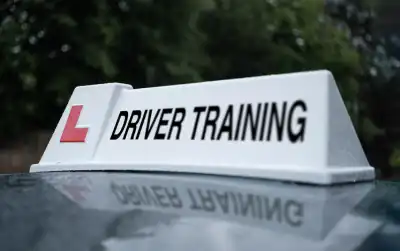
Teaching your child to drive can be rewarding, fun, and cost effective. Simply work alongside a professional instructor, optimise your lessons, and create a positive atmosphere in the car.
Confirm you are allowed to teach
Check first that you are allowed to teach someone to drive. You must be at least 21 years old and qualified in the same type of vehicle. Cars with manual transmission, for example. You must also have a full licence for at least three years. The license can be from the UK, EU, Switzerland, Norway, Iceland, or Lichtenstein.
Work with a professional instructor
When teaching your child to drive, it's important to work alongside a professional instructor rather than in isolation. The professional knows what the learner has to do to pass the test, how, when, and why. You may not, particularly if you learnt years ago when the rules were different. Without professional help you might unknowingly pass on outdated, inaccurate, and incomplete information to your child. That could cause problems come test day.
The key is to make your lessons consistent with the professional instructor's. The instructor teaches your child a skill required on test day. Reversing out a parking bay, for instance. The learner - and you as a parent - then you know how the manoeuver has to be done to pass. You entire that your lessons mimic the technique. You teach the same skill the same way.
Minimise stress
Stress, anxiety, and frustration make it harder to learn so keep your child calm on the road. The trick is to personally set the mood in the car. If you are calm, the learner is likely to be calm.
Give simple instructions
Give the learner short instructions that can be immediately understood. 'Take the next turning on the left', for instance. This is preferable to 'turn left, continue for one mile, then reverse into a parking bay by the post office'. The learner may struggle to absorb complex instructions while steering, changing gear, and noticing hazards. Break up your instructions into bite-size pieces.
Set learning objectives
Before a lesson, set a learning objective and explain it to your child. For example, 'the purpose of the lesson is to perfect hill starts'. Then explain how to improve and why it matters. this ensures the lesson has purpose and helps you make good use of time.
Use familiar roads
Teach your child on familiar roads. It is easier to give clear guidance when you know every junction, zebra crossing, and pothole.
Be positive and supportive
Being positive, encouraging, and forgiving mistakes helps your child relax and learn. There is nothing to gain by being harsh.




